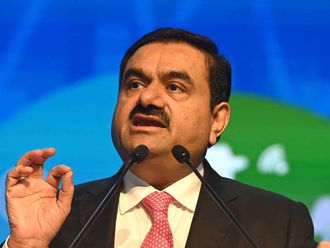
In 1969, ‘Time’ magazine posed the question of the moment: ‘Will there be a recession?’.
The story correctly gauged inflation as the US’s primary domestic problem. And stating that inflation was becoming not just a national but an international crisis. A critical part of that commentary was that the Federal Reserve did not distinguish between changes in relative prices and systemic inflation - a rise in the general price level.
Even as fiscal policy and supply shocks captured the imagination, especially after the 1973 oil price shock, the belief still remained that interest rates were high, even though this was not the case in real terms. In the short run, a high interest rate might dampen economic activity and slow inflation, but in the long term causality reversed.
Economists started to understand that over the long term (which was shorter than anyone might have wished), there was no scenario where unemployment could be low without accelerating inflation.
Not impacting asset prices - yet
More than 50 years later, we see similar deleterious effects, where a dramatic increase in interest rates has failed to arrest rising asset prices. Monetary contraction would have to come at a cost, and that cost would mean that asset prices would have to be arrested and reverse course.
In the US, this has had some impact in some markets throughout the country, with mortgage rates rising above 7 per cent and coinciding with sliding prices and rising inventory levels. (There has never been a time in economic history where a shortage in supply has not been followed by a glut).
Driven by expectations, higher interest rates have coincided with new records. It is clear that this phenomenon cannot last, as it did not during the Burns’ years in the Federal Reserve in the 1970s. Broad money supply aggregates such as M2 have risen by more than 33 per cent since January 2020. Whilst they have slowed down in the last 12-month period, there can be no doubt that the lag between monetary aggregates and inflation implies that the general price level will remain stubbornly high.
Moreover, should the recent flat-lining continue, the impact on economic growth and the level of asset prices will be felt as the economic cost is finally paid.
The same can be said of beneficiaries of such monetary growth in other parts of the world, including real estate prices in the UAE. With a new project launch averaging every 18 hours since the start of the year, there can be no doubt that the investor is now spoilt for choice.
Price gap gets wider
The yawning gap between ready and offplan process remains higher than what is seen in other countries. Even though it can be couched with amenities, the higher costs due to the supply chain are now bleeding into the higher ‘replacement costs’ that are required for new builds.
In this ‘new old world’ of expectations, there is a pervasive sentiment that on the consumer level, expenditure has started to slow down. On the asset level, the best bet remains the gap between offplan and ready prices start to narrow (this is happening in the midmarket segment). More importantly, any reduction in transactions - the highest since April 2009 and which is not a true yardstick for those who were there during the 2008 boom-bust scenario in an environment where data points were not fully captured - will occur as the shift moves back to the ready market.
An increase in the weightage of such transactions will start to course correct the reliance on offplan prices that have marched higher (driven by easier payment plans).
This is not the prevailing zeitgeist, where there is frenzied activity. Indeed, for the better part of 2023, there has been speculation of interest rates being reduced.
This may well happen at some point, if M2 aggregates continue to remain subdued. The critical difference between 2019 and 2024 is the level of asset prices throughout the world, and on a relative basis, valuations have become more aggressive (barring a few exceptions).
Now that money is no longer free, the impact of global central bankers are coming home to roost despite the regulatory easing and aggressive reforms implemented in the UAE, which will play out over the longer term.
The question that ‘Time’ magazine posed in 1969 answers itself - a slowdown is here.













